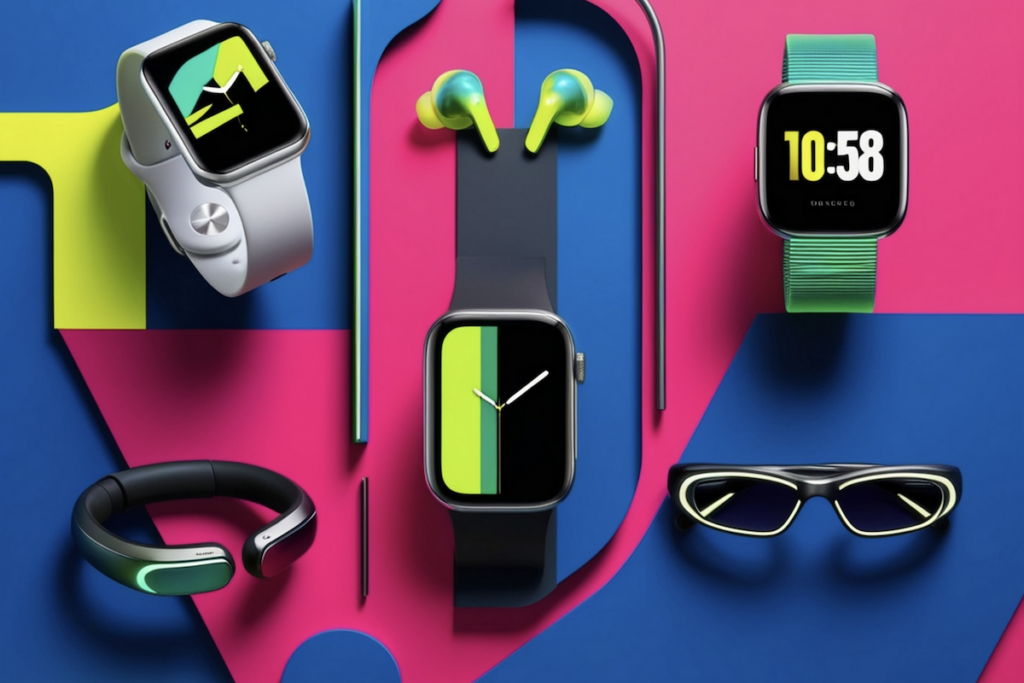In the ever-evolving retail landscape of the past decade, we’ve witnessed a whirlwind of changes. Digitalization and technological advancements have sent shockwaves through traditional retail strategies, disrupting and transforming all retail software solutions.
But compared to those gradual shifts, the last two years have been nothing short of a rollercoaster ride. The pandemic swooped in like an unexpected gust of wind, reshaping our lives, thoughts, work dynamics, and even how we shop virtually overnight.
The retail industry, in particular, faced an existential crisis of epic proportions. Some companies swiftly found their footing in the new normal, deftly adapting to the turbulent waters. However, others struggled to stay afloat, desperately seeking survival amidst the stormy seas.
According to research, 2019 marked a turning point that witnessed some of the largest retail bankruptcies in history, accompanied by a staggering 9,000 store closures in the United States alone.
As the dust begins to settle and rays of normality gradually illuminate the horizon, retailers are now taking stock of the situation and contemplating the future of their industry.
While it remains impossible to precisely predict the contours of future shopping experiences, let’s explore predictions and prominent trends in retail software development that will shape the retail landscape in the current year.
So, what game-changing trends will shape 2023’s retail scene?
First and foremost, we have the unstoppable rise of omnichannel retail strategies. Gone are the days of an online versus in-store battle; the industry is now firmly entering the era of seamless, integrated retail experiences. Relying solely on single-channel sales and treating physical stores as the ultimate destination for customers is no longer an option.
Today, consumers expect companies to offer an omnichannel service, catering to their desire for convenience. With the average digital consumer owning more than ten connected devices, it’s no surprise that contemporary customers turn to their gadgets before purchasing or availing of a service.
In this new landscape, typical purchasing journeys begin with browsing and comparing product features and prices across the vast realm of the internet, using whatever device is within arm’s reach. Customers may buy a product online immediately, postpone the decision for an in-store visit, or even engage in a combination. Moreover, many shoppers may initiate the shopping process on their mobile phones, get interrupted, and resume it later using another device.
This shift in consumer behavior has made omnichannel strategies one of the defining trends in the retail industry. Embracing an omnichannel approach empowers companies to establish many customer touchpoints, resulting in more seamless and personalized shopping experiences.
Achieving this strategy involves adopting a unifying platform that integrates all existing sales channels, inventory management systems, and marketing platforms. By syncing all the data, companies can allow customers to seamlessly transition from one channel to another, picking up right where they left off.
Additionally, the convergence of retail software development and personalized marketing is another key trend. Retailers leverage advanced analytics, artificial intelligence, and machine learning to gain deep insights into customer preferences, behavior patterns, and purchase history. This wealth of data allows them to deliver highly targeted and personalized marketing campaigns, product recommendations, and individualized shopping experiences. By leveraging technology, retailers can forge stronger connections with their customers and drive engagement, increasing sales and customer satisfaction.
Furthermore, integrating immersive technologies, such as augmented reality (AR) and virtual reality (VR), revolutionizes the retail experience. These technologies enable customers to visualize products in their own space, try on virtual clothing, or experience virtual walkthroughs of stores. By providing immersive and interactive experiences, retailers can create a sense of excitement, engagement, and convenience, fostering a deeper connection between customers and their brands.
Last but not least, the rising importance of social commerce must be noticed. Social media platforms have evolved beyond communication tools and have become powerful retail channels. Retailers leverage social media’s vast reach and influence to showcase their products, engage with customers, and drive sales. Social commerce integrates seamlessly with the social media experience, allowing customers to discover and purchase products directly from their favorite platforms, eliminating friction and streamlining the path to purchase.
As the retail industry evolves, these trends shape how businesses operate and engage with customers. Embracing omnichannel strategies, prioritizing sustainability and retail software development, leveraging technology for personalization, integrating immersive experiences, and capitalizing on social commerce are critical ingredients for success in the dynamic retail landscape 2023 and beyond.
Enhancing Customer Experience through Digitalization and Technology
In recent years, the retail industry has witnessed a significant trend toward embracing digitalization and technology. Research indicates that 89% of retailers plan or implement technologies to enhance the customer experience, while 94% believe digitalization has improved their business analytics.
As we move into 2023 and beyond, the need for creating connected and seamless customer experiences across various channels continues to grow. This necessitates the continued implementation of technologies and a focus on retail digital transformation.
Drawing on our extensive experience in software development and analyzing customer inquiries, our team of seasoned experts has identified several critical tech advancements that can shape the future of your retail business.
Intelligent Demand Prediction with Machine Learning
Understanding market trends and accurately predicting consumer demand are crucial for staying ahead of competitors and driving business growth. By leveraging machine learning technology in inventory management processes, you can automate demand forecasting, prevent over- or under-stocking, and reduce logistics costs. Furthermore, this technology promotes greener production and consumption, helping enhance your brand’s reputation and attract eco-conscious customers.
Touch-Free Shopping with AR, VR & AI
Augmented reality (AR), virtual reality (VR), and artificial intelligence (AI) are revolutionizing the retail industry. Online retailers have invested over $7 billion in AI, and customers are increasingly willing to pay more for items they can experience through AR. These technologies bridge the gap between online and physical shopping experiences. Customers can try on virtual clothing, share virtual fitting rooms, or visualize products in their own spaces. AI algorithms analyze consumer behavior, enabling personalized offers and improved shopping experiences.
Mobile Apps for Boosting Sales
Mobile shopping is gaining popularity, with mobile commerce surpassing desktop and tablet sales. To provide a consistent and smooth mobile shopping experience, businesses should prioritize offering mobile-friendly, responsive web pages or developing feature-rich mobile applications. These apps can support customer loyalty programs, enable real-time communication, provide sales support, and deliver personalized experiences.
Data- and NLP-Driven Chatbots
Chatbots and personal assistants have become essential in a world of limited in-person interactions. By leveraging data science, machine learning, and natural language processing (NLP), chatbots reduce wait times and provide 24/7 customer support. They guide customers through the website, answer questions, and offer personalized recommendations based on their preferences. Adopting chatbots can save businesses time and money spent on customer service.
Voice Commerce on the Rise
Voice search has evolved from basic inquiries to online shopping, with millions of US adults owning intelligent speakers. Optimizing your website for voice-based search and utilizing voice ordering technology can tap into this growing trend. By incorporating keywords and content for voice search and offering voice-assisted ordering, you can enhance website traffic, improve customer convenience, and capitalize on the rise of voice commerce.
Autonomous Robots & Vehicles Transforming Retail
Autonomous robots and automated delivery vehicles are becoming more prevalent in retail. Major retailers like Amazon, Walmart, and Hyundai have already deployed AI-powered robotic solutions and driverless cars. These technologies address various challenges, from inventory management and warehouse operations to delivery services and overall customer experience. By embracing retail robots, you can create more competent stores, automate routine tasks, increase efficiency, and save time.
Flexible Payment Options as a Necessity
Flexible payment options, particularly mobile payments, and digital wallets, are dominant trends in 2023. Adopting APIs to integrate digital wallets, QR codes, and MST transactions enables retailers to offer customers the convenience of flexible payment methods. As global point-of-sale transactions increasingly shift towards mobile payments, staying at the forefront of the industry requires providing customers with diverse and user-friendly payment options.
Personalized Recommendations and Customer Insights
Personalization is critical in today’s retail landscape. By leveraging advanced data analytics and AI algorithms, retailers can gain valuable insights into customer behavior, preferences, and purchase patterns. This allows for delivering highly targeted and personalized product recommendations, promotions, and marketing campaigns. By understanding your customers better, you can create tailored experiences that resonate with them, increasing customer satisfaction and loyalty.
Seamless Integration of Online and Offline Experiences
The boundary between online and offline shopping continues to blur. Customers expect a seamless and integrated experience across different channels. Retailers can achieve this by implementing unified customer profiles, synchronized inventory management systems, and integrated loyalty programs. This ensures that customers can transition effortlessly between online browsing, in-store shopping, and vice versa, providing a consistent and convenient experience throughout their customer journey.
Enhanced Supply Chain Visibility and Efficiency
Efficient supply chain management is critical for the success of any retail business. Technology is crucial in improving the supply chain’s visibility, traceability, and efficiency. Solutions like RFID tagging, real-time inventory tracking, and predictive analytics can optimize inventory management, reduce out-of-stock situations, and streamline logistics processes. By ensuring a smooth and efficient supply chain, retailers can minimize costs, improve customer satisfaction, and gain a competitive edge.
Social Commerce and Influencer Marketing
Social media platforms have become powerful marketing channels and drivers of sales. Retailers can leverage social commerce by integrating buy buttons and shoppable posts on platforms like Instagram, Facebook, and Pinterest. Additionally, collaborating with influencers with a robust online presence and engaged followers can significantly impact brand awareness and sales. By tapping into the social media landscape, retailers can reach a wider audience and capitalize on the power of social recommendations.
Sustainability and Ethical Practices
Consumers are increasingly conscious of sustainability and ethical practices in their purchasing decisions. Retailers prioritizing environmental sustainability, fair trade, and ethical sourcing can build stronger connections with customers who align with these values. Implementing transparent supply chains, offering eco-friendly products, and communicating your commitment to sustainability can attract and retain environmentally conscious consumers.
Conclusion
In conclusion, embracing digitalization, technology, and emerging retail trends is essential for retailers aiming to thrive in 2023 and beyond. By enhancing customer experience, adopting advanced technologies, and aligning with changing consumer expectations, retailers can stay competitive and create a unique and engaging shopping journey.
Author
-

The views and opinions expressed in this guest post are solely those of the author, and do not necessarily reflect the official policy or position of NFT News Today.




